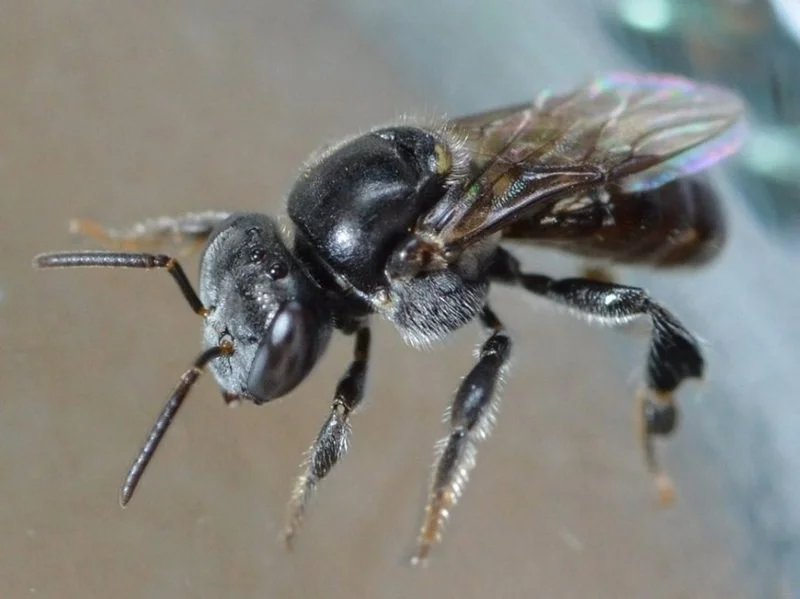The Secret Life of Native Bees: What Australia's Native Pollinators Can Teach Us About Resilience and Ecology
Forget everything you thought you knew about bees. According to Clancy Lester, environmental educator and native bee researcher, the true heroes of Australia’s pollination story aren’t European honeybees, but thousands of native species that rarely get noticed—or understood.
"There’s about 1,650 species officially recorded, but estimates suggest we have over 2,000," Clancy says. "And only 11 of those make honey. Most live solitary lives. Each female builds her own nest, gathers her own pollen, and raises her own young."
Through his Master of Bioscience research, Clancy has been mapping the intricate relationships between native bees and plants using DNA metabarcoding—analysing pollen carried by bees to identify their plant hosts. "We can now pick up a bee, run DNA on its pollen, and create a map of every flower it's visited," he says. "It’s a game changer."
Female bees can choose the sex of their offspring. “for solitary bee the female will lay either a fertilised egg which will become a female or she'll lay an unfertilised egg which will become a male.” Clancy casually throws out. Unlike the european honey bee many species don’t live in hives or colonies where they care for their young. Once the egg is laid they play no further part in the development of their young.
Some however like Reed bees live in small family groups. “they might have a mom club that are feeding babies or like older sisters that have already hatched and going back [to feed the young]” This proves that Australia’s native bee species are varied and few are alike evolving to the vast climatic conditions of the continent
Clancy Lester Native Bee Educator
Clancy has already identified species that may be new to science. "There was one specimen that was incredibly shiny. We even consulted with Yolngu elders and learned the word 'Malinkton' for shiny. If it turns out to be a new species, I’d love to use that name (Malinkton) to honour them."
But Clancy's work isn't just academic. It's a call to action. Climate change, land clearing, and chemical use are devastating pollinator populations. "Since colonisation, we’ve lost 9,000 invertebrate species in Australia," he warns. "That’s staggering. And the pesticides we use—especially neonicotinoids—are devastating. They don’t just target pests. They wipe out everything."
Even more insidious is the mismatch between native bee life cycles and flowering times, disrupted by shifting climate patterns. "Stingless bees in Arnhem Land rely on stringybark trees to flower at a specific time. But those flowers are blooming later and later, and the bees are starving."
Despite the grim statistics, Clancy is hopeful. "People care. When they learn, they act. Schools are reaching out. Councils are getting on board. There are great projects like the Melbourne Pollinator Corridor, B&B Highway, and 'Bugs for Bugs' that show there's a real appetite for change."
His ultimate message? "You can help. Leave a patch of bare soil. Don’t prune all your dead stems. Build a bee hotel. And please, stop using pesticides."
And as for the future? "There are only about six native bee taxonomists in Australia. Most are volunteers. We need more research, more recognition. I want people to see bees not just as pollinators, but as cultural icons, ecological keystones, and something to marvel at."
The secret life of bees is more than a curiosity—it’s a blueprint for a more resilient, connected future.
Check out The Gardeners Lodge Podcast for the full interview with Clancy Lester




